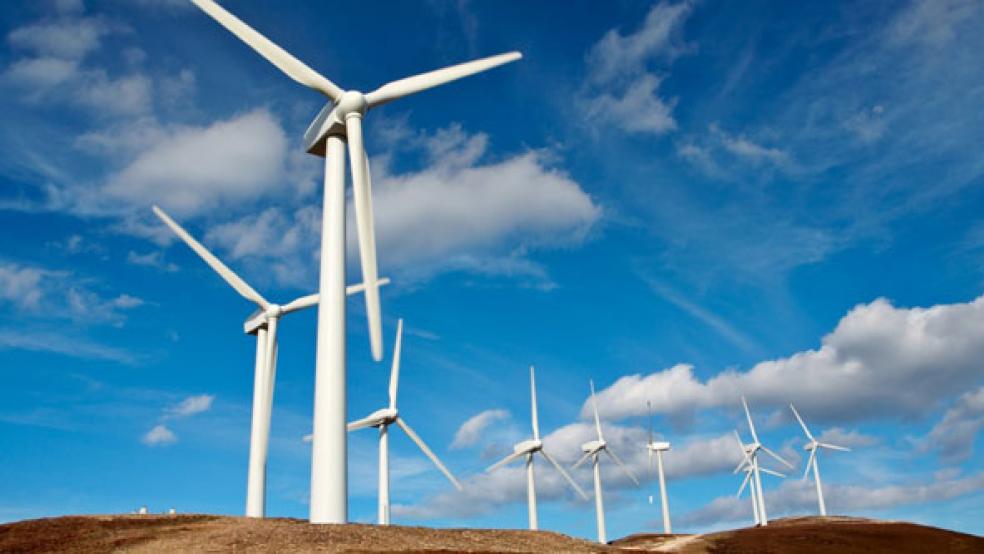The nation’s largest nuclear utility is leading a full court lobbying blitz to eliminate subsidies for the wind energy industry, which built 35 percent of new U.S. electricity generation capacity since 2007.
The campaign has opened a fissure between Republican presidential candidate Mitt Romney, who backs elimination of the wind production tax credit (PTC), and some moderate Republicans who represent states that have benefited from wind power’s rapid expansion. Sen. Charles Grassley, R-Iowa, whose state now gets 20 percent of its power from wind, recently likened Romney’s opposition to the PTC as “a knife in my back.”
Chicago-based Exelon Corp., which gets 92 percent of its electricity from its 17 nuclear power plants, launched the campaign after chief executive officer John Rowe retired last spring and was replaced by Chris Crane, who previously ran the company’s nuclear division. Rowe cultivated an image as “green” utility executive, supporting a carbon tax and lobbying in favor of an “all of the above” energy strategy. Under Rowe, the company also cultivated close ties with the home-grown Obama administration, which backs the TPC.
But that changed abruptly under Crane. Two weeks ago, the company, which has about 12 wind projects of its own, was thrown off the board of the American Wind Energy Association, the trade group for the industry. “They’re leading the campaign to defeat our industry’s number one priority,” said Peter Kelly, the top lobbyist for AWEA. The group says that nearly half the 75,000 new jobs created in the past five years will disappear after January 1 if the wind PTC isn’t extended.
Exelon spent $5.1 million to influence Congress in the first half of the year, giving the company a large presence on Capitol Hill. Its lobbyists have been working to eliminate the wind credits from tax legislation that will be considered during a lame duck session where Congress must deal with a host of expiring tax and spending measures, better known as the fiscal cliff.
“The wind energy PTC distorts today’s competitive wholesale electric markets, causing severe financial harm to other, more reliable clean energy sources,” Paul Elsberg, a spokesman for the firm, said in an email.
In addition to Romney, the anti-wind campaign has won some powerful backers on Capitol Hill. Sen. Lamar Alexander, R-Tenn., wrote an op-ed in the Wall Street Journal this week calling the PTC “Puff, the magic drag on the economy.” Citing a new report from Northbridge Group, consultants for large utilities, Alexander said the subsidy would cost the government $14 billion between 2009 and 2013.”Running coal and nuclear out of business is not good for the U.S. economy,” he wrote. “There is no way a country like this one – which uses 20 to 25 percent of all the electricity in the world – can operate with generators that turn only when the wind blows.”
The Tennessee Valley Authority recently signed several agreements to purchase electricity from wind producers, a spokesman for the AWEA said.
Wind proponents say wind turbines, once installed, provide a dependable source of low-cost power that will last as long as new fossil fuel or nuclear plants. Rowe, Exelon’s former boss, said in a speech to the American Enterprise Institute last year that he foresaw a future where his utility would build complexes that combined wind turbines, which turn reliably at night, daytime solar cells and natural gas turbines, which can serve as a bridge fuel when either falter. Such complexes would be less expensive and more environmentally friendly than coal or nuclear plants. Even before Obama took office, the Energy Department called for wind power to produce 20 percent of U.S. power by 2030, up from 3 percent today.
But that future is beginning to recede as uncertainty over extension of the tax subsidy ripples across the wind belt. Siemens earlier this week said it was laying off 600 workers at its wind-turbine manufacturing plants in Fort Madison, Iowa and Hutchinson, Kansas. It also announced it wouldn’t call back 330 temporary workers.
Leading installers of wind power are cutting back their plans because of the uncertainty. Florida-based NextEra Energy Resources, with 44 percent of a nationwide network of electricity generating facilities wind-powered, will invest only $505 million in new wind-generating facilities this year, down from $2 billion in 2010. The company recently told Wall Street that it has no new plans for wind investments beyond 2015.
“There’s a boom-bust cycle in our industry,” said Steve Stengel, a spokesman for NextEra. “When the PTC is in effect, there are a lot of projects. And when it lapses, very little is built.”
The PTC gives firms that own the wind turbines a tax credit of 2.2 cents per kilowatt hour. The subsidy enables wind to compete with low-cost natural gas, which in recent years was the largest new source of electricity generation, capturing 45 percent of the market. Wind is already cheaper than nuclear power, coal or other alternative energy sources like solar, the spokesman for the AWEA said.
PTC advocates say the subsidies for wind create a level playing field with the subsidies that go to other forms of energy production. Nuclear power benefits from the Price-Anderson act, which places a low limit on utility liability in the case of a nuclear accident and sharply lowers that industry’s insurance costs. The oil, coal, gas and nuclear industries receive more than three-quarters of all energy subsidies and allowances, which total about $300 billion a year, according to the Green Scissors campaign – a joint endeavor of environmental and libertarian groups.


